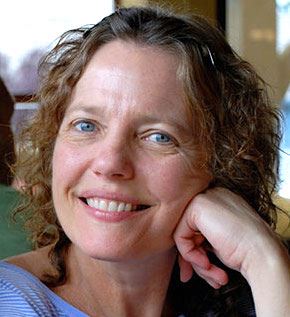 Presented by Kathryn Ford, MD
Presented by Kathryn Ford, MD
1.5 CEUs available for LMFTs, LEPs, LPCCs, LCSWs
About the Presentation
The goal is for participants to learn the concept of emotional aperture, how to teach the present moment experience of aperture awareness and how to use this for relationship enhancement. The neurological basis for aperture will be discussed and participants will learn practical exercises for use with couples.
Present moment awareness, in particular aperture awareness, is the most important skill couples can learn to keep the love they have or to get back the love they’ve lost.
At some point couples discover that their special connection has another side- an increased vulnerability to feeling hurt, ignored, betrayed, disappointed, frustrated. Injuries, large and small, trigger their emotional apertures to close, slam the door. With the “end of the honeymoon” couples are launched into the full mind-bending puzzle: open they have the vulnerability to emotional injury, closed they suffer the loss of connection they want and need.
This opening and closing of our emotional apertures is the central element of human connection. When couples learn to pay attention to apertures they gain the power to steer through the dark and stormy moments and to find the loving connection they long for.
When the going gets tough couples tend to do two counterproductive things. Counterproductive Thing #1 is tuning out and going on autopilot, allowing habitual reactions to drive them further apart. Counterproductive Thing #2 is to try to think their way out of the tangled moments. Both tuning out and thinking can get in the way of using our brilliant minds for the direct perception of what is happening in the present moment.
Aperture awareness is something we are well designed for, something we can sense like proprioception, sight or taste. We fail to notice it or develop it because we don’t know what to do with it. Therapists can teach couples to be aware of their emotional apertures and how to use this superpower for loving connection.
Learning Objectives
At the end of this presentation, you will be able to:
- Define emotional aperture
- Name the part of the brain responsible for our fast response to danger.
- Name the two most common mistakes made by couples in difficulty.
- Understand how to use aperture awareness with their current methods of practice.
- Use at least two exercises for teaching aperture awareness.
About the Presenter
For the past 20 years, Kathryn Ford, M.D., has been one of the San Francisco–Bay Area’s most sought after couples therapists, known for work that goes deeper and is more effective than traditional understandings and techniques. Drawing from multiple therapy models as well as meditation and mindfulness, Dr. Ford helps couples to stay open to each other by cultivating in-the-moment awareness, especially the awareness of apertures, the felt sensation of availability for connection.
She has wide experience teaching both therapists and couples in a variety of settings, including Stanford University, Stanford School of Medicine, Santa Clara University, and The Institute for Transpersonal Psychology. She offers private consultation and workshops for couples and therapists. Dr. Ford also works with organizations and corporations as a consultant with Upstart Logic.
Dr. Ford received her M.D. degree from Brown Medical School and completed a residency in psychiatry at Stanford University School of Medicine.
Presentation Outline
12:00 Welcome and introduction
12:10 Aperture and Aperture Awareness
12:25 The 12:35 Methods for cultivating aperture awareness, demonstration and exercises
1:00 Dialogue: difficulties and strategies
1:15 Q & A
TARGET AUDIENCE: LCSW, LMFT, LPCC, LEP
SCV-CAMFT is a CAMFT-approved Continuing Education Provider (CEPA 052466). This course meets the qualifications of 1.5 continuing education credit for LMFTs, LPCCs, LEPs and LCSWs.
The views expressed in presentations made at SCV-CAMFT meetings or events are those of the speaker and not, necessarily, of SCV-CAMFT. Presentations at SCV-CAMFT events do not constitute an endorsement of the vendor or speaker's views, products or services.
